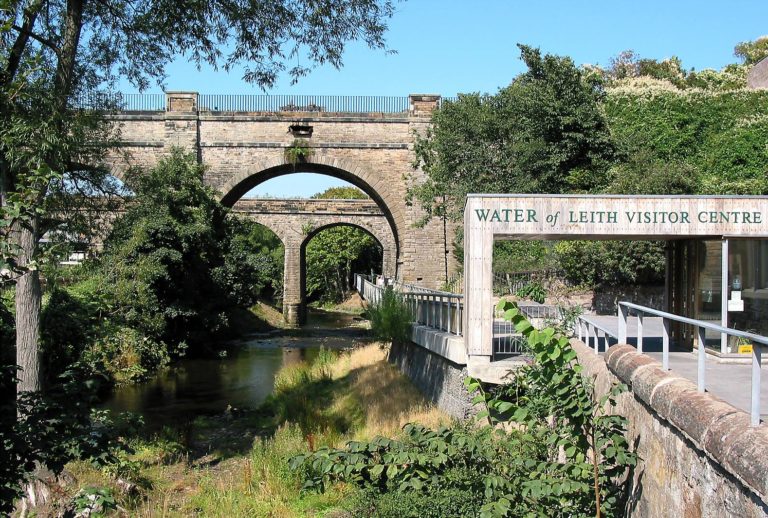The 23rd May was a very wet day! Trust Manager Helen was at a conference at the Botanics to understand strategies for ‘slowing the flow’ of water from our towns, cities, farms and greenspaces into rivers. Investigating interesting concepts like swales, rain gardens and ‘smart’ water butts. And it rained, appropriately enough, but then the rain did not stop for 24 hours and soon enough a flood event was declared on the river and defences were enabled. Only 12 days earlier, Helen had been visiting projects in the Forth Catchment on the rural Allan Water and River Devon with ex-Conservation Officer, Charlotte, to look at farmland projects and natural flood management which mean water moves though the water course more slowly. With the frequency of high rainfall events predicted to rise, its definitely time to look at these green infrastructure solutions to ‘slow the flow’ into the Water of Leith, both in the hills and in the city.

Just look at this hydrograph…it had been dry for over a week (believe it or not), then some over-night heavy rain on Wednesday evening was followed by constant heavy rain all day Thursday. Conditions we do expect in Scotland, so why did the Water of Leith level rise so sharply and peak at a level similar to the flood in December 2022?.

As more of the city is developed and green / brown spaces become concrete and tarmac, the rain runs straight off into the Water of Leith. The over-stretched sewer network cannot cope and also ‘vents’ into the river along with all the days sewer waste!
In the upper catchment beyond Balerno, peatland, farmland and forestry prevails, but with many drainage ditches focusing flow in to the channel or tributaries, water can soon rush into the river. The reservoirs are there to help hold back some of the upper catchment run off but when they are full – there is little which can be done.
There is no doubt water needs to be held in the catchment, we need to slow the flow in to the rivers, but how?
Upper Catchment – ideas from the Allan and Devon

These are some images of our field trip with Charlotte. We looked at natural flood management at the Pools of Muckhart – Leaky dams hold back water when the small streams become swollen, flood overflow channels and wetland scrapes divert flow into pool / wetland areas which flood and then slowly the water percolates back into the ground rather than running off.
We also looked at Flood overflow channels along the Allan Water. A larger scale project the landscaping works here improve water storage capacity and act as a natural flood management measure by diverting the pathway of floodwaters so that water flows over the re-connected floodplain. By incorporating scrapes into natural flood management, water storage capacity is increased, processes like sediment capture and nutrient filtration establish, and a wetland habitat is established, increasing biodiversity by habitat creation for several plant and animal species, such as wading birds, amphibians and insects like damselfly and dragonfly. It was teeming with tadpoles when we visited. In this area log jams had also been used to ‘encourage’ natural erosion and re-meandering of the main channel which had been straightened and chanelised in sections. There was also extensive riparian planting and signs of beaver activity. Read more: https://forthriverstrust.org/project/allan-water-project/
Could such ideas help in the more rural areas of the Water of Leith Catchment?
In the City – green infrastructure

This workshop run by Heriot-Watt & Royal Botanic Garden Edinburgh, funded by the RECLAIM Network, explored the issues of maintenance and upkeep responsibilities of urban green infrastructure. We looked at how rain gardens, green roofs and swales can be created and what levels of maintenance is required in the future. These structures are undoubtedly cheaper to create than hard engineering solutions but like SUDS (sustainable urban drainage systems) they need effective maintenance to remain effective. And what of storm water butts – is this something effective we could all do from our roofs and drain pipes? Could blocks of flats have storage solutions, making water available for watering and exterior cleaning? Could these butts be gardens themselves. Read more: https://www.rbge.org.uk/news/media-centre/press-releases/current/five-years-to-turnaround-life-in-urban-areas
Scottish Water, landowners, the council and farmers are beginning to look at ways to ‘slow the flow’, but just how effective will the various methods be and who has the expertise to maintain new green infrastructure?



